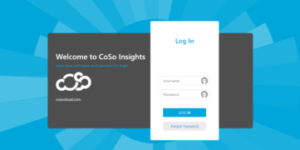
Timing Is Everything, Virtual Training Tip #3
November 6, 2017
Tip 3 of 7 part series on “7 Tips for Expanding Virtual Training Within your organization’
Recently we shared 7 Tips for Helping Expand Use of Virtual Training Within Your Organization. As a part of a series, we’re going in-depth on each of these 7 topics.
This week, we tackle tip #3 – “Timing is Everything.” When and how you conduct the training is imperative to its effectiveness. Whether you decide to conduct the session before work, during work, lunch breaks, or provide pre-recorded, on-demand training, you must consider the implications for your chosen time frame. For example, if you are training your call center users during business hours, is there enough phone/email coverage so your customer communications don’t go unanswered during the training session? Choose a time and location that is convenient for both your employees and your business needs.
As famous Canadian professor, philosopher, and public intellectual Marshall McLuhan once said, “The medium is the message.“
One of my prior employers conducted quarterly training sessions scheduled during our workday. This was fine for individual contributors with minimal customer contact, but for my colleagues manning the support phones, emails, and chat, this proved to be a challenge. Customers calling, emailing, or attempting to chat with our Support team would receive a message that the team would be unavailable for several hours, and would return messages as soon as they were free. The result? Plenty of unsatisfied customers, who were used to being able to speak to a representative immediately to their question or issue, as well as plenty of flustered Support members, who were incentivized by how quickly they answered inquiries, and how many they answered per hour per day. This led to a lot of multi-tasking and watch-checking in the training sessions, and to be honest, made the sessions pretty unsuccessful in engaging the audience.
The solution? Management finally agreed to stagger multiple training sessions throughout the day, so there would always be customer support coverage to assist our customers.
Of course, with a diverse and widespread workforce, you may not be able to find one single timeframe that works for all of your employees. This is where pre-recorded, on-demand sessions can be quite efficient (especially for Millennials, who are very used to viewing videos on their iPhones and iPads). Provide the recording to your attendees (and don’t forget to require them to sign in, so that you can track their attendance and progress), and allow them, say, a week to view it on their own time. Depending on their job role and work hours, they may choose to view the training on public transit in the morning or afternoon, view it on their lunch break, view it at night after putting their children to bed, or even in the middle of the night if they experience a bit of insomnia. I even experienced a manager who allowed us to claim an extra hour of overtime when we viewed the training session after hours – he showed us that he took our development seriously, and this was a way to soften the sting of having to perform work-related training on our own personal time.
“Nothing is a waste of time if you use the experience wisely.” – Rodin
And then, if possible, consider a follow-up session in person, where your employees can get together as a team, or in small groups, and discuss what they have learned. Was it effective? Was it relevant? And what could you do better for your next training session?
The point is to give your employees flexibility to view the training when it is convenient for them. This also helps empower employees and show them that you trust them to meet this training deadline as they see fit (which, in itself, works wonders for employee morale and engagement – don’t underestimate the little things!).
Other Articles in this Series:
Original Article: 7 Tips for Helping Expand Use of Virtual Training Within Your Organization
Tip #1: WIIFM
Tip #2: Start at the Top
Tip #3: Timing is Everything
Tip #4: Good News Travels Fast
Tip #5: Bad News Travels Even Faster
Tip #6: Making It Fun
Tip #7: Understand and Monitor Usage











